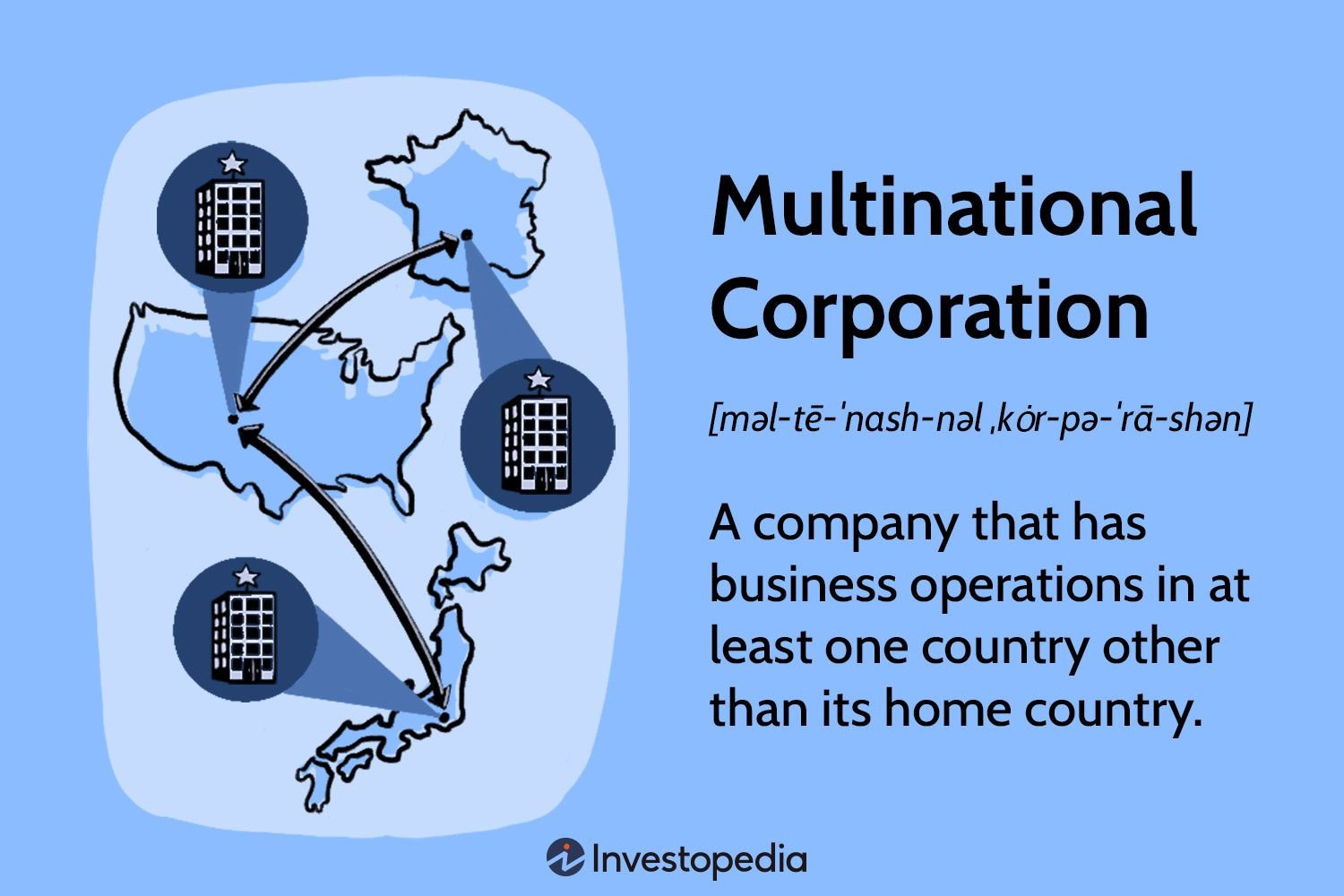
A multinational organization is defined as a business that operates in multiple countries, enriching its reach and impact on a global scale. These entities navigate diverse cultures, regulations, and markets, embodying versatility and adaptability in their strategic approach. Such organizations cultivate a dynamic environment that fosters innovation and collaboration among a melting pot of talents. With each corner of the world representing a unique opportunity, multinational organizations embody the essence of interconnectedness and the power of diversity in driving success. Their presence resonates across borders, shaping the future of business and society alike.
A Multinational Organization is Defined as a Business That
A multinational organization is a business that operates in multiple countries, with a centralized management system that oversees global strategy and local implementation. Such companies have a presence in various markets worldwide and are significant players in the global economy. Let’s delve deeper into what constitutes a multinational organization, its structure, benefits, challenges, and examples.
Understanding Multinational Organizations
Multinational organizations span borders and cultures, leveraging opportunities in diverse markets while facing the complexities of operating in multiple jurisdictions. Key characteristics of multinational organizations include:
– **Global Presence:** Multinational companies have offices, production facilities, or distribution centers in multiple countries.
– **Centralized Management:** While operations are decentralized to some extent, strategic decisions are typically made at the headquarters, ensuring consistency in branding, policies, and overall direction.
– **Local Adaption:** Multinational organizations adapt their products, services, and marketing strategies to suit local preferences and comply with regulations in each country of operation.
– **Diverse Workforce:** These companies employ a culturally diverse workforce, fostering innovation, creativity, and a global perspective within the organization.
Structure of Multinational Organizations
The structure of a multinational organization is designed to efficiently manage operations across different countries and regions. Common structural elements include:
– **Regional Divisions:** Many multinational companies organize their operations based on geographic regions, such as Asia-Pacific, Europe, or the Americas, each headed by a regional manager.
– **Functional Departments:** Functions like marketing, finance, human resources, and operations may be organized centrally at the headquarters or replicated in each region for better local coordination.
– **Matrix Organization:** Some multinational organizations adopt a matrix structure, where employees report both to a local manager for daily tasks and a global manager for strategic direction.
– **Virtual Teams:** With advancements in technology, multinational organizations increasingly rely on virtual teams that collaborate across borders, time zones, and cultures to achieve common goals.
Benefits of Being a Multinational Organization
Operating as a multinational organization offers several advantages, including:
– **Market Diversification:** By expanding into multiple countries, companies can reduce dependence on a single market and tap into new opportunities for growth and revenue.
– **Economies of Scale:** Multinational organizations can benefit from economies of scale by standardizing processes, leveraging global purchasing power, and sharing resources across borders.
– **Access to Talent:** Operating internationally allows companies to access a broader talent pool, attracting skilled employees from different backgrounds and experiences.
– **Risk Mitigation:** Diversifying operations geographically can help mitigate risks associated with economic downturns, regulatory changes, or geopolitical instability in a particular region.
Challenges Faced by Multinational Organizations
While there are several benefits to being a multinational organization, there are also challenges that companies in this category often encounter, including:
– **Cultural Differences:** Managing diverse teams across various countries requires sensitivity to cultural nuances, communication styles, and work practices.
– **Legal and Regulatory Compliance:** Multinational organizations must navigate complex legal frameworks, tax regulations, and compliance requirements in each country of operation.
– **Currency Fluctuations:** Exchange rate volatility can impact financial performance, affecting revenues, costs, and profit margins in different markets.
– **Coordination and Communication:** Ensuring effective coordination and communication across dispersed teams can be challenging, especially when dealing with time zone differences and language barriers.
Examples of Multinational Organizations
Numerous well-known companies exemplify the characteristics of multinational organizations, including:
– **Apple Inc.:** The tech giant has a global presence with retail stores, manufacturing facilities, and research centers in multiple countries.
– **Toyota Motor Corporation:** As one of the world’s largest automakers, Toyota operates production plants and sales networks across various regions worldwide.
– **Nestlé:** The Swiss multinational food and beverage company has a vast international footprint, with products sold in nearly every country on the globe.
– **Unilever:** This consumer goods company operates in multiple markets with a diverse portfolio of brands catering to different regional preferences.
In conclusion, being a multinational organization comes with both opportunities and challenges. Success in this dynamic environment requires a keen understanding of global markets, cultural diversity, regulatory landscapes, and effective management practices. By leveraging the benefits and addressing the challenges, multinational organizations can thrive and remain competitive in an increasingly interconnected world.
A multinational organization is defined as a business thatparticipates in all trade organizations
Frequently Asked Questions
What is the definition of a multinational organization?
An organization that operates in multiple countries and has a centralized management system is considered a multinational organization.
How does a business qualify as a multinational organization?
A business must have operations in at least two countries with a central management team coordinating global activities to be classified as a multinational organization.
What are the advantages of being a multinational organization?
Multinational organizations can benefit from economies of scale, access to diverse talent pools, and increased market reach by operating in multiple countries.
What challenges do multinational organizations typically face?
Multinational organizations often encounter complexities related to cultural differences, varying regulations, and the need for effective communication across different locations.
How do multinational organizations manage their global operations?
Multinational organizations use strategies such as standardizing processes, adapting to local market conditions, and leveraging technology to efficiently manage their global operations.
Final Thoughts
In conclusion, a multinational organization is defined as a business that operates in multiple countries, expanding its reach and impact globally. Such companies adapt to diverse cultures, regulations, and market dynamics, fostering innovation and growth. By establishing a presence in various regions, multinational organizations can leverage local resources and talents, enhancing competitiveness and market share. Overall, the ability to navigate cross-border complexities successfully is a hallmark of a multinational organization, enabling it to thrive in the interconnected global economy.




